Greece is literally a “sea of islands”.
According to National Geographic, it has at least 1400 islands scattered across various archipelagos, each with its own specific features.
The Ionian islands, for example, are lush with olive groves, vineyards and cypress forests; the Cyclades are dry and battered by the meltemi, the north-easterly wind that cools the summer heat. The remote Dodecanese islands have a wealth of archaeological sites, while the Sporades boast a marine reserve teeming with dolphins and Mediterranean monk seals. Meanwhile, the islands in the Saronic Gulf are a favourite vacation spot with Athenians, making them ideal for those seeking a less touristy, more “local” side of Greece.
This sumptuous “feast” of islands, all basking in the attentions of Helios, the Sun God, can be easily visited by boat. The click of a mouse is all it takes to begin your adventure in this island-hopper’s paradise.
What you’re sure to find on any Greek island yacht cruise is that fantastic Mediterranean holiday mood we all dream of: enjoying a tasty Greek salad with creamy tzatziki, sipping a glass of ice-cold white retsina (the aromatic Greek wine made with Aleppo pine resin), lounging on wicker chairs at a psarotaverna at the water’s edge, with red gingham tablecloths fluttering in the meltemi and the turquoise sea glittering in the Aegean sunshine.
Then wriggling your toes in the hot sand and listening to the gentle surf, as your boat bobs gently on the water not far away.
Let yourself be charmed by the Greek island lifestyle, woven through with mythical tales and sun-drenched ancient ruins where the fates of gods and heroes intertwine.
Be enchanted by the dramatic beauty of Santorini and its “explosive” past. Let loose in the hedonistic nightlife on Mykonos. Drop anchor in the cobalt blue bay of Myrtos, on Kefalonia. Wander among wildflowers on Skopelos, climb up to the Acropolis on Lindos, sneak into the Palace Grand Master of the Knights of Rhodes; indulge in a cocktail on super-chic Hydra, Greece’s answer to Portofino. Sway to the melancholic rhythm of rembetika, Greek blues, or the pounding beat of sirtaki blaring out of a speaker at a local festival. In Greece, there’s always an impossibly white beach to lie on, incredibly clear water to dive into, a postcard-perfect taverna with its own landing place and a glass of ouzo to drink with friends as you wait for the sunset.
A yacht cruise in the Greek islands is sure to be a unique, all-consuming experience that stays with you forever. See it to believe it.
- Ionian Islands: Italian influences and ancient Greek myths
- The Cyclades: Melteni islands, icons of the Mediterranean
- The Dodecanese: the magic of Hellas expressed in a thousand ways
- Sporades archipelago: musical locations, marine reserves and lush pine forests
- Saronic Islands: the most traditional archipelago with a hint of jet set
Ionian Islands: Italian influences and ancient Greek myths
Rising out of the Ionian sea in a chain formation off the west coast of continental Greece (except for Kythira, which lies at the southern end of the Peloponnese), these islands’ immaculate beaches, wooded mountains, cooler climate and vast groves of olives and cypresses make them a sailor’s paradise and great fun to explore. The Venetians, French and British have shaped the architecture and culture of this archipelago, while its excellent cuisine has traditional Italian influences; but each island has its own unique landscape and history.
- Corfù Town, for example, is a UNESCO world heritage site with its blend of Venetian lanes and Parisian-style porticoes.Idyllic Paxos is a chic gem with its three pastel-painted fishing villages and white pebble coves.
- Ithaca, the legendary island of Ulysses, still has wild nature and a relaxed feel.
- Lèucades has some of Greece’s best beaches.
- Kefalonia is its own world of bucolic villages, ruggedmountains, vineyards, cliffs and golden beaches.
- Zakynthos (aka Zante) is the birthplace of Italian poet Ugo Foscolo, and a nesting place for the endangered loggerhead turtle.
- Kythira, which belongs to the Ionian Islands even though it’s just seven miles off the Peloponnese coast, is notable for its white villages of “cube” houses, similar to those in the Cyclades.
Along with lush lemon groves, gardens and vineyards, Corfù boasts its own international airport, making it the ideal departure point for a yacht cruise. The marina at Gouvia offers plenty of charter options and has the full range of facilities for yachts. Let the maistros – the north-westerly summer wind typical of the Ionian islands – puff your sails and push you on to discover this splendid archipelago. In spring and autumn, when temperatures are pleasantly mild, you’ll be helped by a light south-easterly breeze instead. Start by exploring the beauty of “Nausicaa’s island”, with its abundant lemon groves, gardens and vineyards. Don’t miss the jagged north-eastern coast of Corfu – its chain of postcard-perfect white pebble beaches is a magnet for the international A-list. Equally stunning is Paleokastrítsa on the north-western side, which is blessed with a bounty of cliffs, sea stacks, caves, tiny coves and inlets where the water turns a piercing turquoise.
Leaving Corfu behind you, sailing southwards you’ll spot tiny Paxos (with its colourful villages Gaïos, Loggos and Lakka, full of cafes and bars on the water’s edge) and minuscule Antipaxos, famous for the half-moon sandy beach of Vrika. Heading south and sailing for another twenty-five miles you come to the four other major islands: Lèucades, Ithaca, Kefalonia and Zakynthos.
Lèucades has a well-equipped marina where you can moor or rent a boat. Sail along the western side (the prettiest and least developed) where the sea is crystal clear and the sand is as white as on any Caribbean beach. You’ll see tall cliffs and arches of white rock interspersed with wide beaches such as Pefkoulia and Kathisma, remote Egremni and beautiful Katsiki Port.
Sailing south of here you encounter Ithaca, the mythical land described in The Odyssey. It is formed of two land masses rising out of the sea, connected by a narrow isthmus. It has towering cliffs, high, arid mountains dotted with olive groves, monasteries and byzantine churches, and pebbly coves.
Opposite emerges Kefalonia, the largest island in the archipelago. The tiny, scenic village of Fiskardo (on the north-eastern coast) is huddled in the protective embrace of a bay, and is a cult destination for yachting enthusiasts. It’s also the only village that remained intact after the 1953 earthquake, as you can see from the beautiful Venetian-style palazzos with red roofs, framed by green hills.
Even further south you’ll spot Zakynthos. You’ll no doubt recognise much-photographed Navagio beach, where a shipwreck lies on the sand. Meanwhile, the famous bay of Laganas is a nesting place for sea turtles. The island’s northern and southern promontories have largely escaped the onslaught of mass tourism, remaining leafier and more remote.
Last but not least, if you have time and want to discover a truly special place, make a beeline for remote Kythira: it stands opposite the Laconia Peninsula (in the Peloponnese) and offers a taster of traditional, old-world life in the Cyclades. Halfway between the Aegean and Ionian, it has more arid yet unspoilt landscapes, with white hilltop villages, fig trees and drystone walls. Its beaches are lovely too, such as wild Chalkos and tranquil Kaladi, which is overlooked by a large rock rising out of the turquoise water.
Sheer cliffs and pebbly coves in the turquoise sea of the Ionian Islands?
Choose the ideal boat or catamaran for you and get ready to set sail.
Visit our Ionian Greece boat rental catalogue
The Cyclades: Melteni islands, icons of the Mediterranean
If you had to shoot a movie called “Dream Yacht Cruise”, the Cyclades would hands down make the best location for it. This string of islands arranged in a circle (kiklo is Greek for “circle”) around the island of Delos, which was sacred to Apollo, is the perfect set for an unforgettable holiday in which you take the starring role.
Scene 1? Sailing slowly into Santorini’s caldera, a Mediterranean “Atlantis” encircled by towering black cliffs (what remains of the ancient volcano cone that erupted in 1650 BC), where whitewashed villages seem to spill over the edges like a sprinkling of fresh snow. Pink or turquoise-domed churches with belltowers and crosses seem to trace the symbols of Greece in the air, while vast parasols unfurl on roof terraces like unmoving sails, weathering the sunlight and the meltemi.
Scene 2? We suggest basking in the Mykonos sunset at Little Venice, overlooked by the iconic windmills silhouette against the sky, as you sip a piña colada and the waves lap the bar tables, and the gilded youth dances the night away to the latest summer hit.
Scene 3? Mooring at the harbour of Ermoupolis on Syros, and dining on board, admiring the colourful neoclassical buildings in the archipelago’s administrative capital, which used to have dozens of shipyards in the 19th century.
The Cyclades are generally dry, and in summer they enjoy the north-easterly meltemi which cools the air and proves challenging for even the most experienced sailors. These islands have beaches of sand the colour of cinnamon (also red, black, white and golden), while the water is a palette of sapphire, aquamarine and jade green. The villages resemble cascades of sugar cubes, with blood-red geraniums adding a splash of colour to their labyrinthine whitewashed alleys. The ochre hills, dotted with fig trees and drystone walls, roll down to meet the Aegean, creating jagged, sheer stretches of coastline.
All of these ingredients, plus a pinch of Athenian sophistication and culture, have drawn artists here since ancient times, such as the sculptors who chiselled marble from Paros and Naxos for centuries.
Every island has its own strong, distinctive character, each one different to the next.
- Party island Mykonos has become synonymous with hedonism, all-night clubbing and anything-goes fashion.
- Sacred Delos is the birthplace of the Greek deities Artemis and Apollo. It boasts spectacular, UNESCO-listed ruins.
- Remote Amorgos offers rock climbing, an incredible monastery set into a towering cliffside, and its own, delicious cuisine.
- Sleepy Tinos (which houses a sanctuary that is the Greek Orthodox equivalent of Lourdes) smacks of mysticism and has a fondness for intricate dovecotes.
- Captivating Folegandros boasts a hora (old town) that is among Greece’s most picturesque, with tree-lined squares and postcard-perfect tavernas where you can feast on huge glasses filled with Greek yogurt, honey, walnuts and fresh fruit.
- Fertile Naxos boasts a staggering number of orchards, olive groves, citrus groves and vineyards, which are rare in this generally arid archipelago.
- The volcanic island of Milos, famous for its statue of Venus (now held at the Louvre in Paris), has a wealth of brightly coloured cliffs, dazzling beaches of every shape and hue, bleached-white coves, Minoan settlements and rainbow-coloured fishing villages.
Then there’s Andros, Sifnos, Serifos, Kythnos, Paros, Kea, Ios…
Whether you choose to spend a week or an entire summer hanging out among these islands, the Cyclades will never cease to amaze you, and you’ll want to go back as soon as you can!
Sailing with the Omnipresent ‘Meltemi’
The earthly paradise of sailors
Discover our rental boats in the Cyclades
The Dodecanese: the magic of Hellas expressed in a thousand ways.
When you picture a yachting holiday surrounded by the authentic magic of ancient Greece, you’re probably imagining the sun-drenched islands of the Dodecanese, at the south-eastern corner of the Aegean, opposite the coast of Turkey. Straddling the east and west, this archipelago (with around twelve main islands plus dozens of smaller islands and islets) makes a fabulous destination for sailors who wish to avoid the meltemi found in the Cyclades, but don’t want to miss out on the beautiful sea, ancient history and culture of Greece.
Rhodes, the largest of the islands, has an international airport with good links to all the main European cities, plus a very well-equipped charter base. Fans of Byzantine architecture will have plenty to rave about in the cobbled streets of Rhodes Town, while archaeology enthusiasts can while the hours away in the ruins of Kamiros or in the enchanting acropolis of Lindos.
Movie buffs will be excited to sail into the horseshoe-shaped harbour of Kastellòrizo, lined with pastel-coloured houses with red roof tiles. The island became famous as the location for Gabriele Salvatores’ film Mediterraneo, which won an Oscar in 1992.
Sun worshippers can bask undisturbed on the beaches on Lipsi, the island of the nymph Calypso, which are deserted even in August.
Meanwhile, scuba divers will be thrilled to explore the shipwrecks off Kalymnos, the sponge island, which also attracts expert climbers to its spectacular cliffs. Its pink oleanders stand out against its dazzling azure sea – totally Instaworthy, no filter needed!
Karpathos is a very traditional island where many women still dress in traditional costume. Its famously windy south coast makes it a magnet for kitesurfers, while naturalists, hikers and botanists will fall in love with Tilos, a haven for biodiversity where extremely rare bird species such as the Eleonora’s falcon can be spotted, and the meadows are carpets of multi-coloured wildflowers.
On Symi the water is so clear that your boat will seem to be floating mid-air, and when you arrive at Gialos(utterly Instagrammable with its neoclassical facades, pretty cafés and seafront tavernas) you’ll realise you’re in one of the most gorgeous harbours in the Mediterranean.
Off-the-beaten-track Nisyros is a volcanic island ideal for those seeking dramatic, adventurous landscapes. The beaches here are black, the streets white, the squares have pebble mosaics and the cafés serve koukouzina, a spirit distilled from grapes and figs.
Kos is the second largest island in the Dodecanese, and makes an excellent departure point for charters. Its landscape of arid rocks is interspersed with lush hidden valleys, and “alpine” slopes covered in Aleppo pines.
Chic, cosmopolitan Patmos used to have a somewhat spiritual vibe: St. John the disciple wrote his apocalyptic Revelations right here. Today, sailors will be enchanted by its abundance of unsullied beaches, elegant Skala – the charming harbour full of trendy bars – and the magical mountain village of Chorà, with the Monastery of Saint John “the Theologian” and the Cave of the Apocalypse.
If complete peace and quiet is what you’re looking for, head to Arki and Marathi, satellite islets just north of Patmos and Lipsi where artists and backpackers rub shoulders with the yacht crowd.
So, drop anchor, slather on the sun cream, pick up a good book and leave everything else behind. You’re in paradise!
Wild beaches and crystal clear water
The magic of ancient Greece among the Dodecanese Islands
Browse our Dodecanese boat rental catalogue
Sporades archipelago: musical locations, marine reserves and lush pine forests
You could be forgiven for feeling a distinct sense of déjà vu when sailing among the Sporades: the lush green scenery, crystal-clear sea and villages of this archipelago in the eastern Aegean provided the set for the musical Mamma Mia! (2008). Meryl Streep, Pierce Brosnan and the other stars of the hit romantic comedy fall in love, argue, reconnect and marry against a backdrop of the old port of Skiathos, the dramatic beach of Kastani (on Skopelos), and the tiny, scenic chapel of Agios Ioannis which stands on a cliff rising out of the sparkling Aegean sea.
Less “hassled” by the meltemi, the stunning Sporades are mountainous islands that resemble extensions of the wooded Pelion peninsula – which makes sense, as they were connected with it in prehistoric times.
The most touristy of them is Skiathos, which is blessed with some of Greece’s most incredible white sandy beaches, set against a backdrop of hills clad in olive trees and aromatic umbrella pines. This is the only island here to have an international airport, making it an excellent base for a yacht cruise. Skiathos town on the south-east side is the island’s attractive main harbour, as well as its nightlife hub.
The charming south coast is a frilly stretch of bays dotted with villas and hotels. Among its more than sixty beaches, the golden sand of Koukounaries is remarkable, surrounded by pine forests. Meanwhile, the idyllic bay of Lalaria is on the north-eastern tip of the island and can only be reached by boat: dramatic rock formations rise out of the turquoise water, by the white pebble beach. Those wanting to get off the beaten track can visit some beautiful monasteries such as Evangelistria, Kastro (the old fortified capital), the ruins of a Venetian fortress at Bourtzi, as well as hidden churches and scenic hiking trails.
Skopelos is like the wilder, more laid-back sibling of Skiathos, and has around forty churches and monasteries. This pretty island has an understated appeal, and is covered with pine forests, olive groves, vineyards, fruit and almond orchards. It has magnificent pebble beaches on the sheltered south-east coast, while its tall cliffs on the north-east side are exposed to the elements. Skopelos town slopes down a hillside to meet a half-moon bay, and is flanked by an 18th c. Venetian kastro and four whitewashed churches. The town is a mixture of ancient chapels and white houses with flower-filled balconies and red or blue shutters. Two quays jut out either side of the vibrant seafront, with its many cafes and boutiques.
Alonissos, the least touristy of the Sporades, is a haven for sailors and nature lovers alike. Mount Korifoula stands more than 300 metres above sea level, covered with Aleppo pines, oaks, lentiscus and strawberry trees, vineyards, olive trees and fruit trees. The west and north coasts are steep and rocky, while the east coast is chiselled out with idyllic, empty beaches with jade green water. The National Marine Park of Alonissos (which includes islets such as Kira Panagia, Gioura and Piperi) was principally set up to protect the very rare monk seal; but as you sail through it you might spot dolphins, whales, turtles and Eleonora’s falcon too.
In Greek mythology, Skyros was the hiding place of young Achilles, who was said to have ridden to Troy on one of the island’s indigenous miniature horses; now very rare, they roam freely here. This is the largest of the Sporades and has a more Cyclades-style feel with a creative, “alternative” vibe thanks to the numerous art and wellness courses that take place on the island. It has a large community of potters, painters, sculptors, embroiderers and jewellers who have flocked to live here. Skyros seems almost split in two: the north coast is a chain of small bays, farmland and stretches of pine trees, while the south coast is rocky and the hills are more arid.
Skyros town is perched high on a clifftop and is dominated by a Venetian-Byzantine fortress. Its maze of cobbled alleys is lined with houses decorated with wood panelling depicting eagles, cockerels or pomegranates; the beds have embroidered curtains and cushions, with carved wooden chairs, shelves and mezzanine platforms. Traditional Skyros interior décor has its roots in the Byzantine era, when the locals teamed up with pirates to plunder merchant ships. Some fine reconstructions of traditional 18th– and 19th– century folk interiors can be admired at the Manos & Anastasia Faltaïts Museum and at the Archaeological Museum.
Idyllic bays with lonely beaches.
Marine national park with dolphins, whales, turtles and monk seals
Sailing charter in the Sporades Islands
Saronic Islands: the most traditional archipelago with a hint of jet set
Sheltered from the meltèmi, and therefore suitable for sailors of all levels, the Saronic Islands will be a pleasant surprise. The archipelago consists of Salamina, Égina, Poros, Agistri, Hydra and Spetses (plus some smaller islets) and lies in a strip of sea between two peninsulas of mainland Greece: the Peloponnese and Attica. The Saronic Gulf splays out opposite Athens, and indeed most visitors come from the Greek capital. The Saronic islands are among the lesser-known groups and lie close together, so that crossings are short. In addition, they have retained a more authentic Greek character compared to many other tourist spots in the country. Yachting holidaymakers love them for their quaint villages, inviting harbours and arrestingly beautiful natural scenery.
Salamina stands right opposite Pireas and is known for the fierce naval battle of 480 BC, during which the Pan-Hellenic fleet defeated the Persians.
Head to Aegina, the archipelago’s largest island, to discover a beautiful town with colourful neoclassical architecture, a magnificent Greek theatre, the deserted city of Paleochora, and the ruins of the Doric Temple of Athena Aphaia. Aegina has always been popular with Athenians, with many buying holiday houses here. Today, the island is famous for its happening nightlife and excellent pistachios.
The star attraction on Angístri are its hidden coves and pebble beaches lapped by transparent water. The beaches of Megalochori and Skala are equipped with parasols and tavernas, but if it’s unspoilt nature you’re after, head for Aponissos and Dragonera. Halikádha is a tiny white-pebble beach hidden beneath a rocky ridge and is a favourite with nudists; while Xekofti is so remote as to be practically deserted, even in high season.
According to the myth, Theseus was born on Poros, a verdant, untouched island that is separated by a narrow channel of sea from Galatà, on the opposite coast of the Pelopponese. East of the harbour is the islet of Bourtzi, topped by a ruined 19th-century castle. On the north coast, the remote bay of Vayionia sits at the end of a green valley filled with citrus groves. Crowned by a dense pine forest, Love Bay is a paradise of tiny white pebbles and emerald-green water, on the south-eastern coast.
Irresistibly beguiling Hydra is the playground of movie directors, intellectuals and artists. Chic and glamourous, it is often compared to Capri and Portofino, not least as it has featured as the set for various films and tends to attract a cosmopolitan jet-set crowd. The main town is draped around a horseshoe-shaped bay, protected by two bastions on either side. Behind its quaint harbour is a mountain, clad in the classic “cascade” of white houses; standing out among them are the ahrontika, traditional 18th– and 19th-century mansions built by wealthy merchants and shipbuilders, painted soft shades of green, pink and yellow. Some have been turned into boutique hotels and museums, like the one dedicated to the island’s maritime history. Others have been restored by families from Athenian high society, or northern European intellectuals, and contain priceless antiques. In addition to having some of the best food in the Greek islands, one of the most wonderful things about Hydra is its peace and quiet – no cars and motorbikes are allowed here. People go around by bicycle or riding mules, and the most charming little restaurants can only be reached on foot or by boat. The same goes for the island’s prettiest beaches: from Agios Nikolaos to Vlichos. Come prepared with hiking boots and you can explore the trails leading up to the striking monasteries of Profiti Ilias or Agia Efpraxia, nestled among the plane trees high up on the hillside. The views are simply spectacular.
Spetses, the southernmost island in the archipelago, also has an elegant, upmarket atmosphere; the Venetian palazzos in the main town give it a “Belle Epoque” charm. This island was settled in the early Bronze Age, as we know from the remains of walls, small statues and utensils that have been discovered at Agìa Marina. It’s ideal for hiking and watersports enthusiasts, particularly those who like to end the day with cocktails in a trendy bar, or dance until the small hours in night clubs. Visit by boat and you can discover hidden, pine-shaded bays, such as the picturesque half-moon at Xilokeriza, on the south side, and Zogeria in the north, which is considered the most beautiful. Overlooked by a small chapel and a taverna, this sand-and-pebble beach slopes into deep, sapphire water: a dream spot for you to drop anchor and dedicate the day to relaxing in the sunshine.
Sheltered by the Meltemi and deserted even in high season.
The archipelago with the most authentically Greek character.
Discover our boats and catamarans for the Saronic Islands

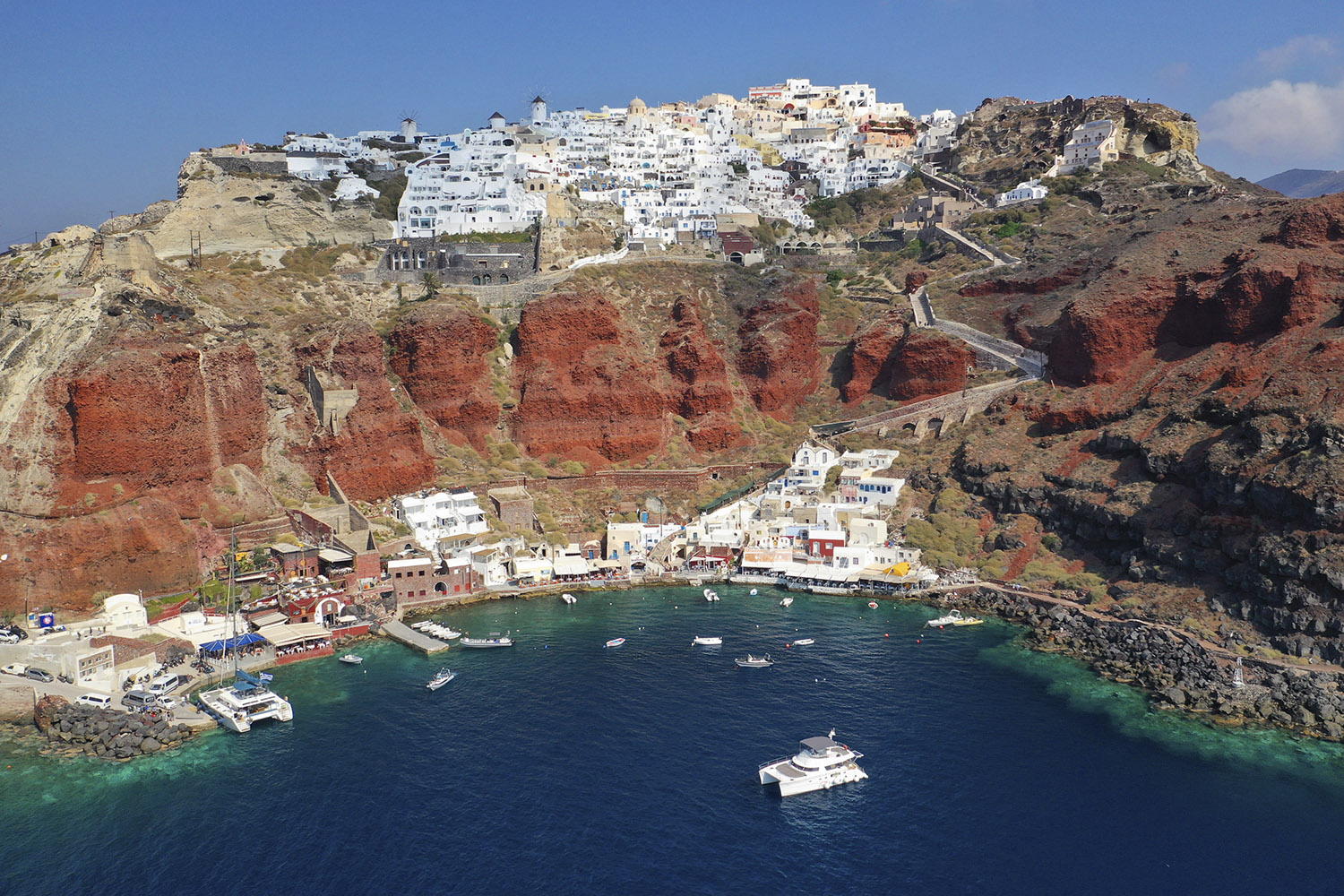
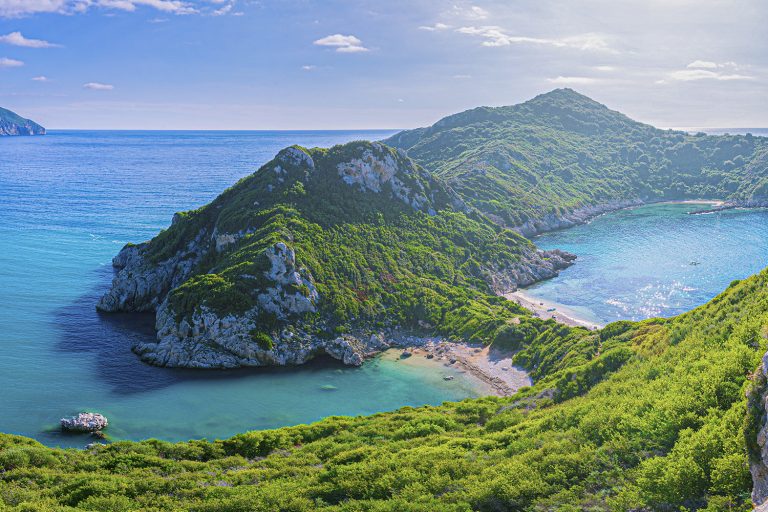
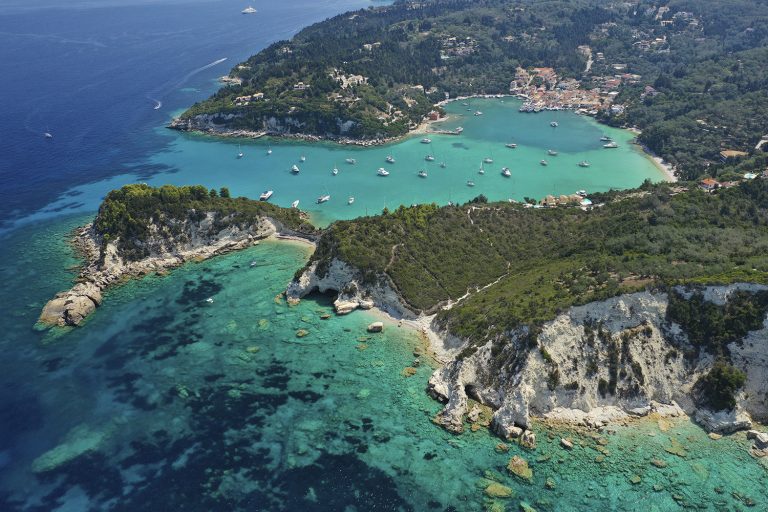
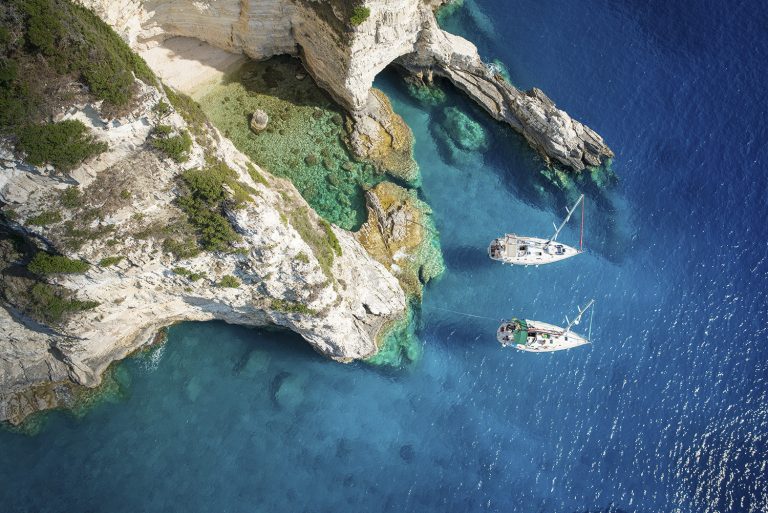
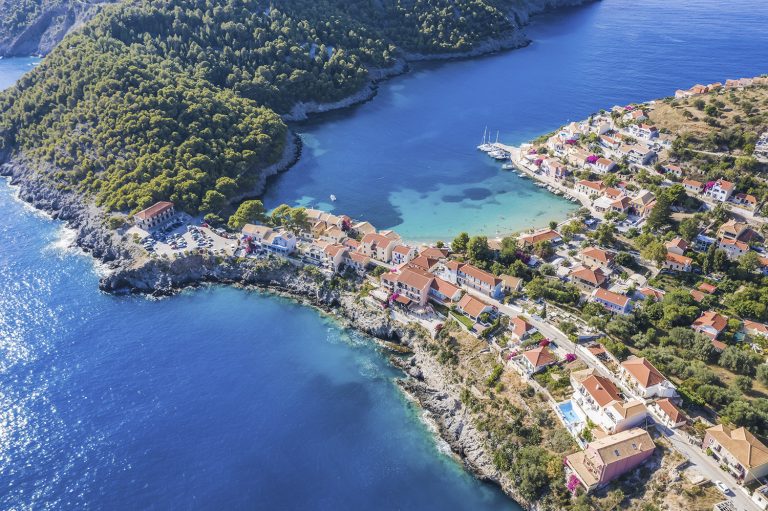
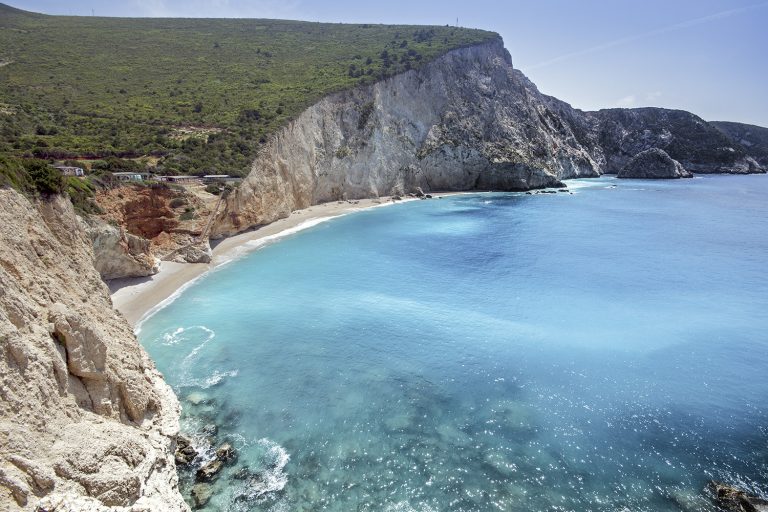
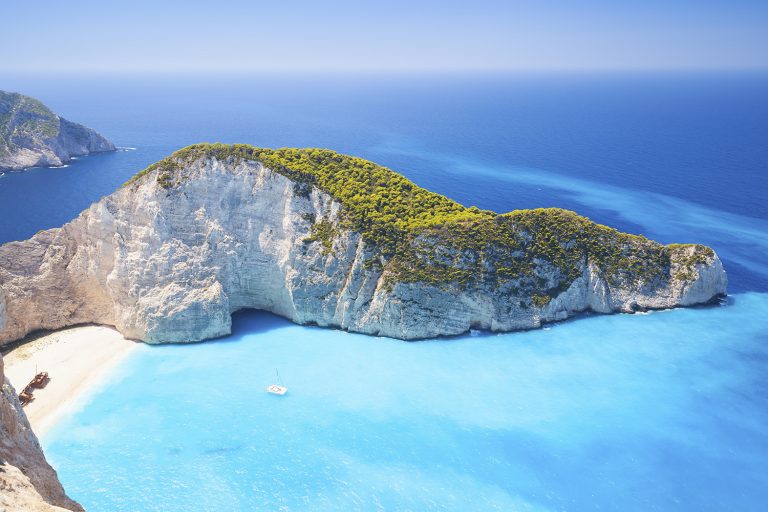
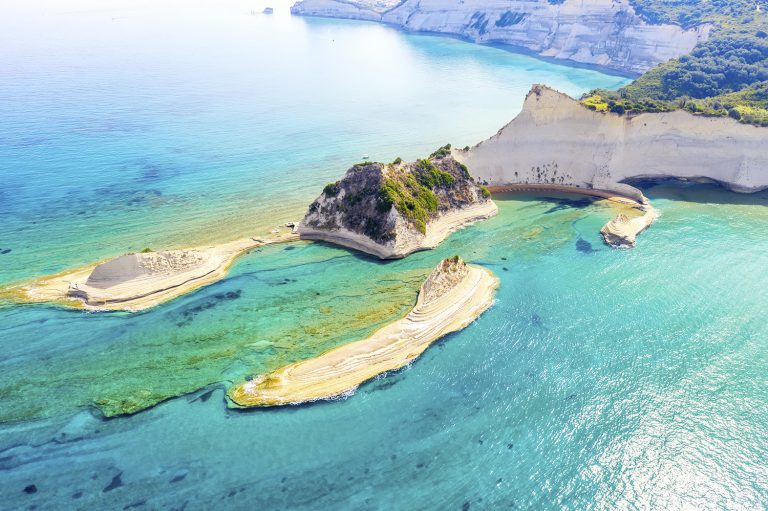
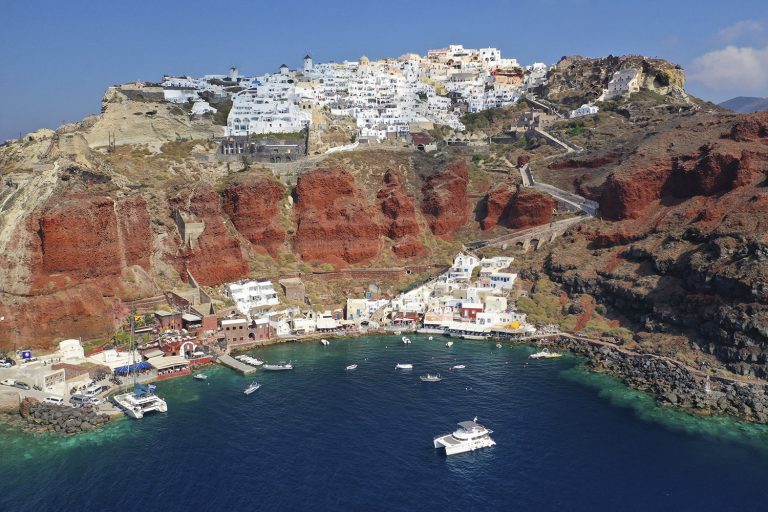
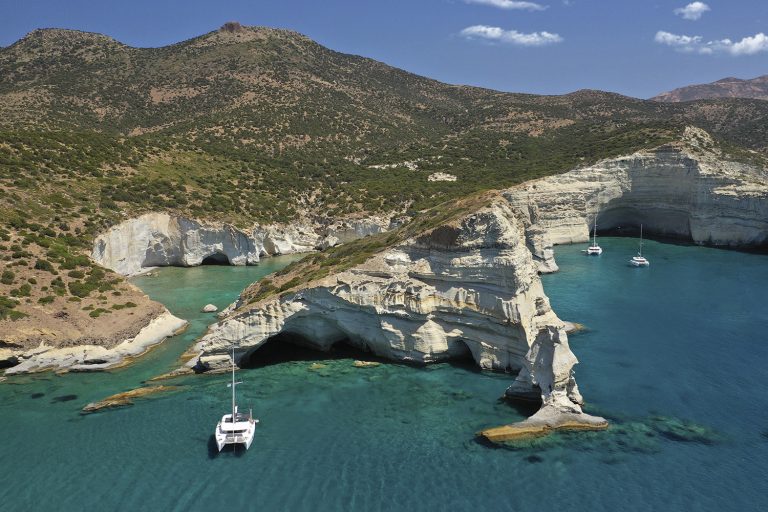
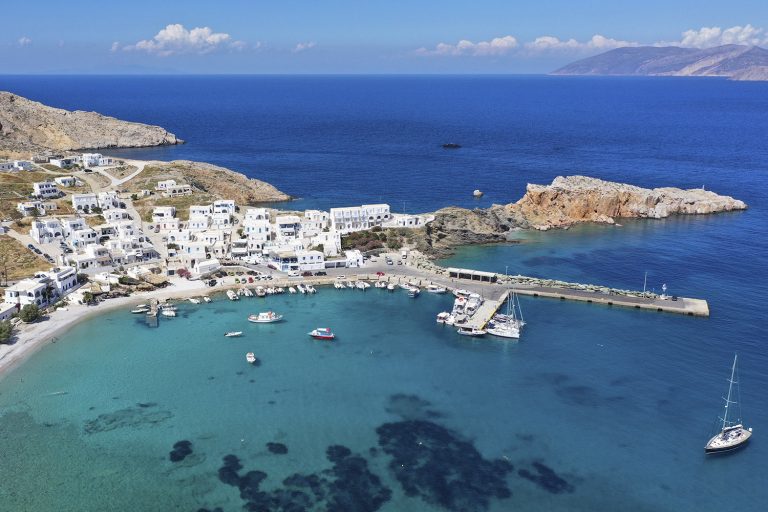
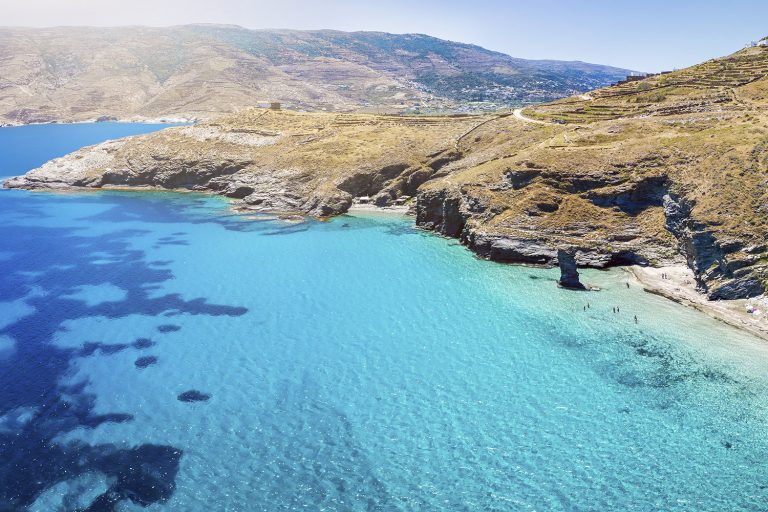
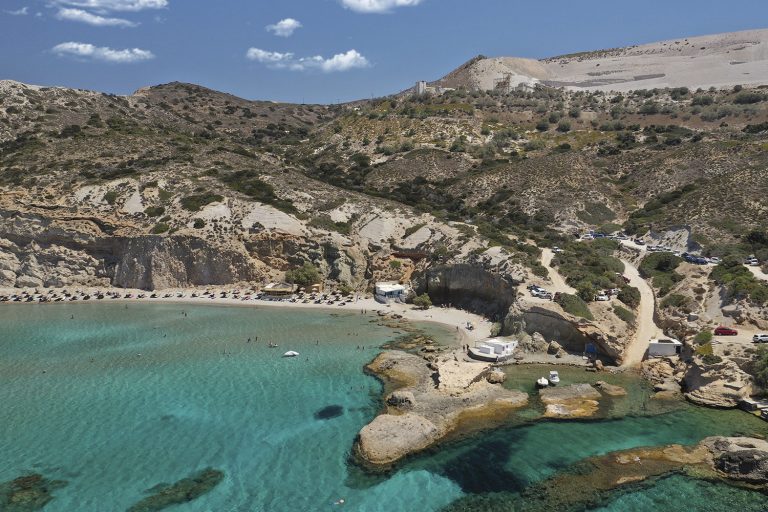
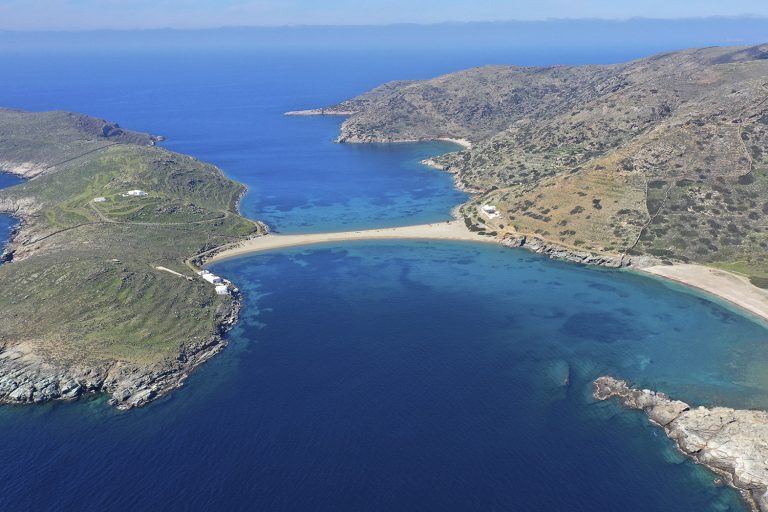
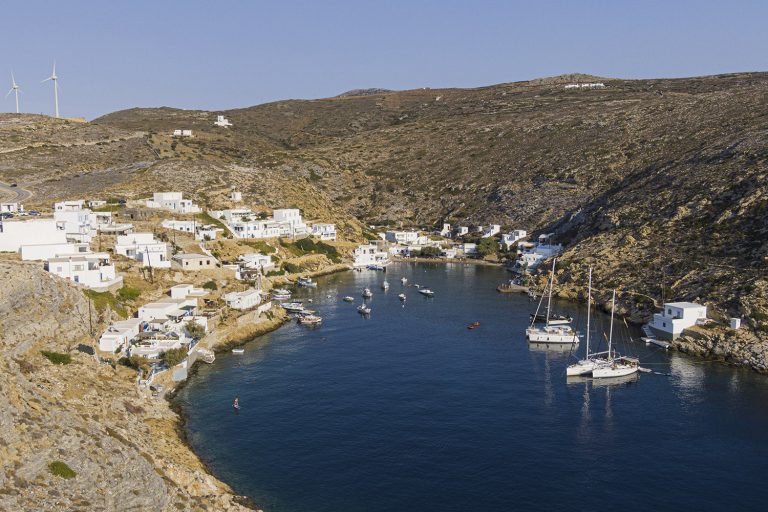
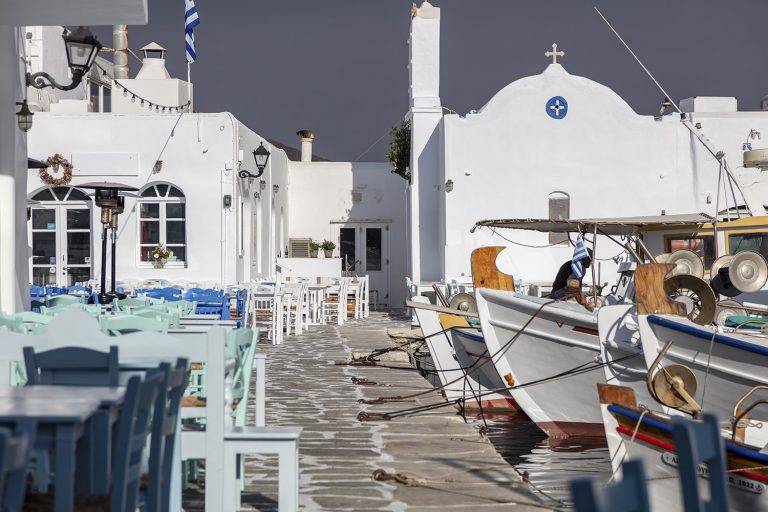
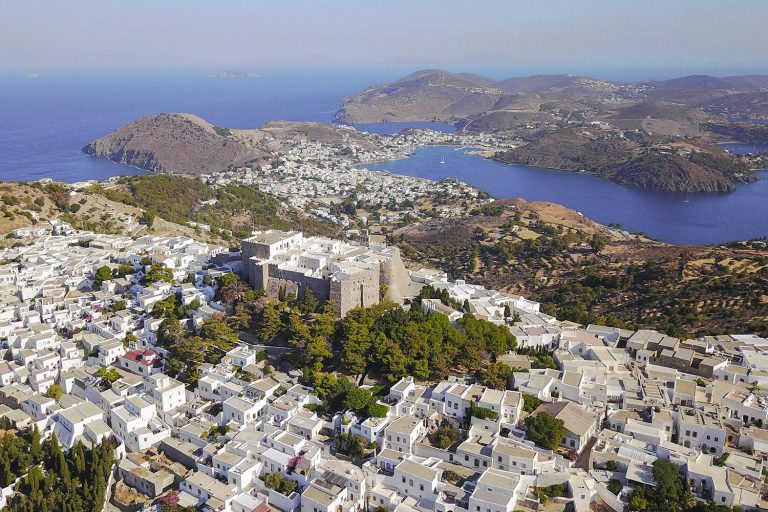
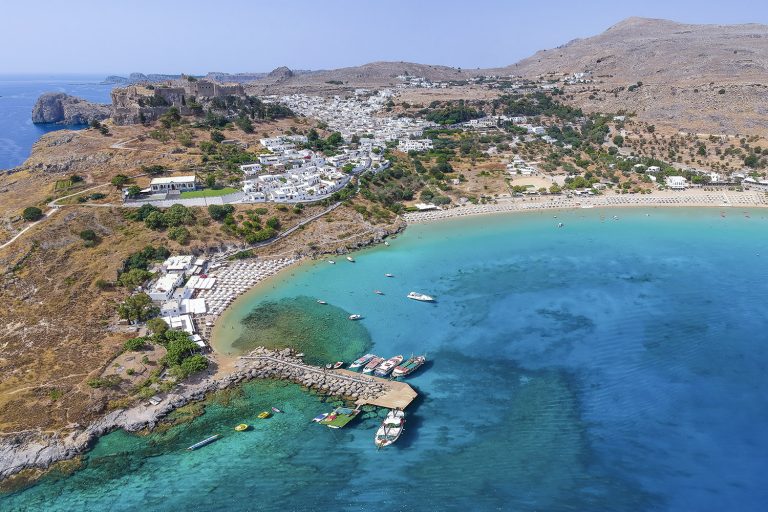
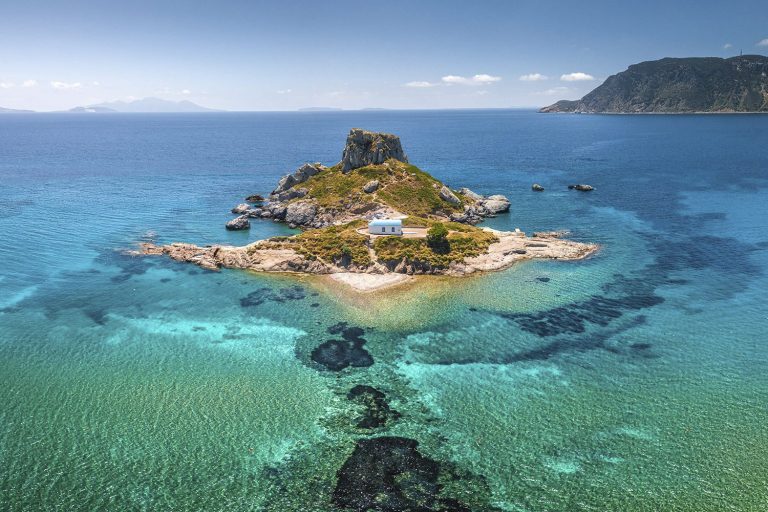
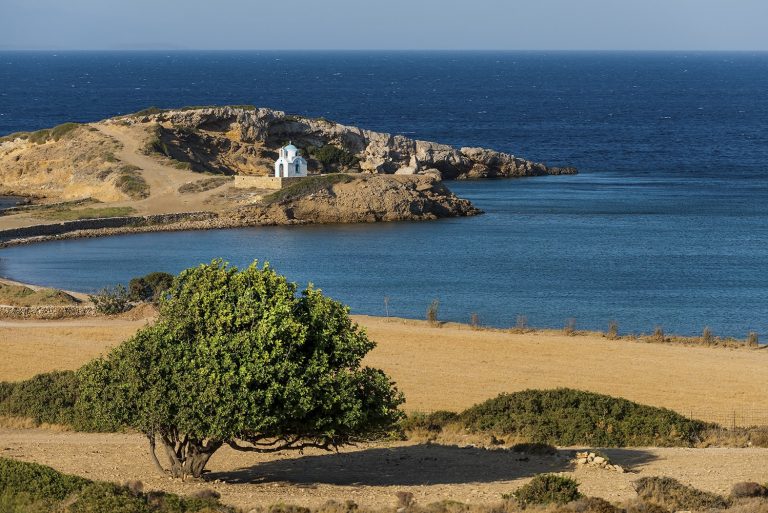
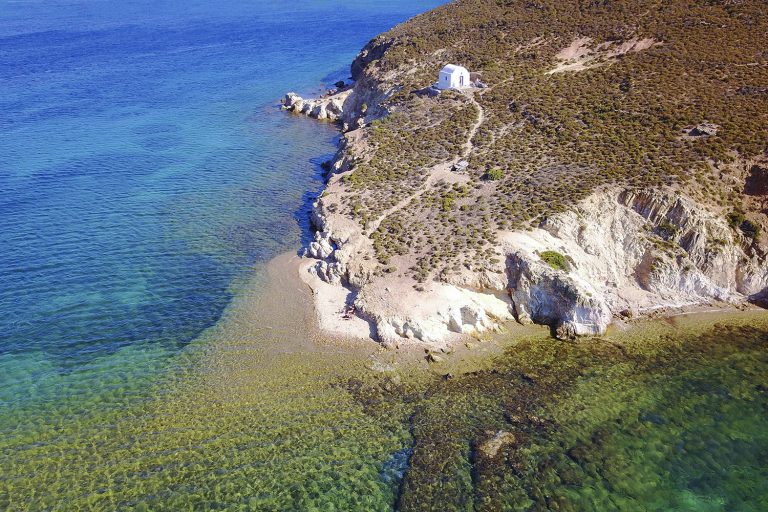
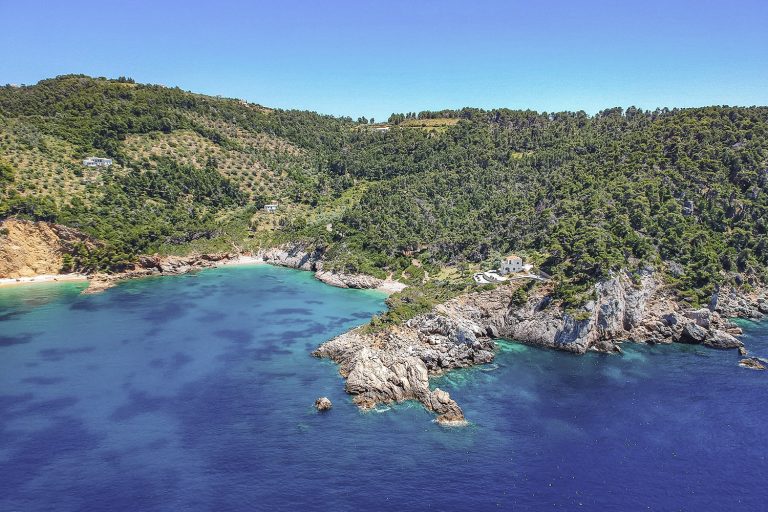
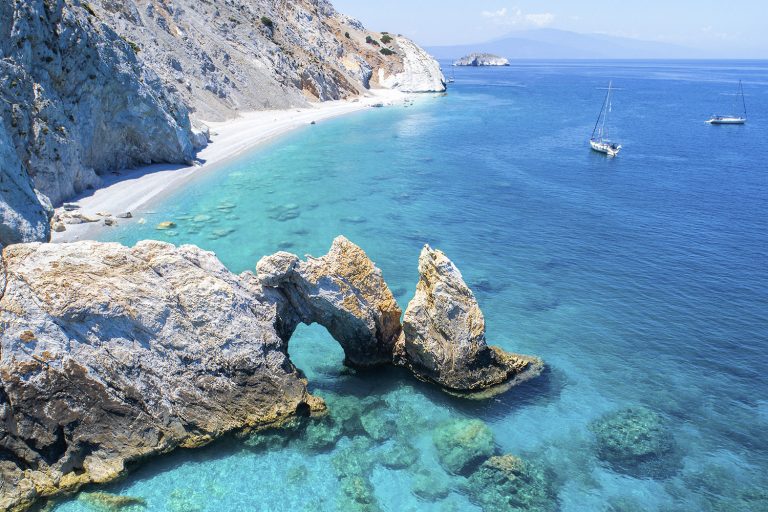
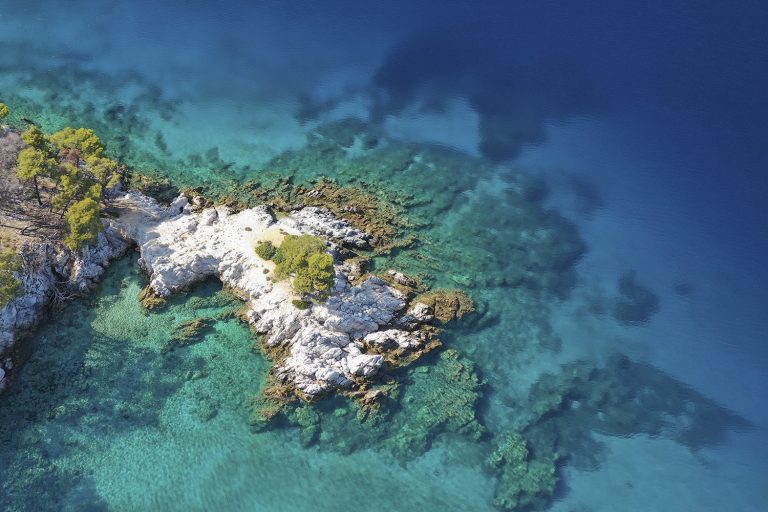
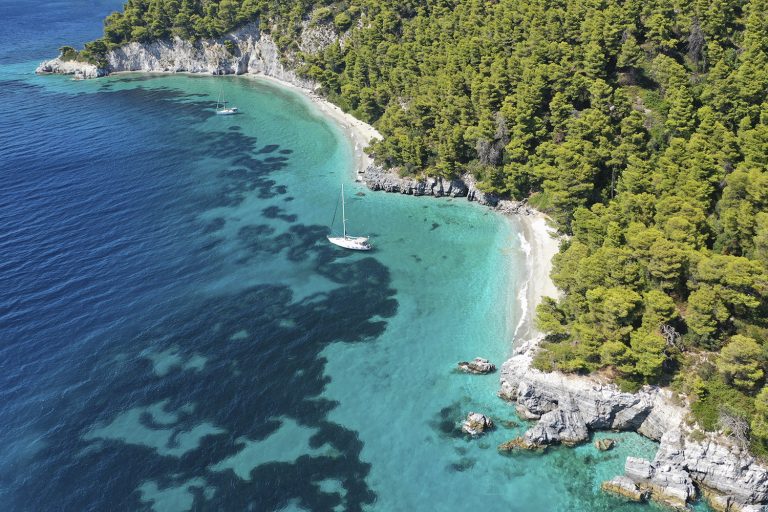
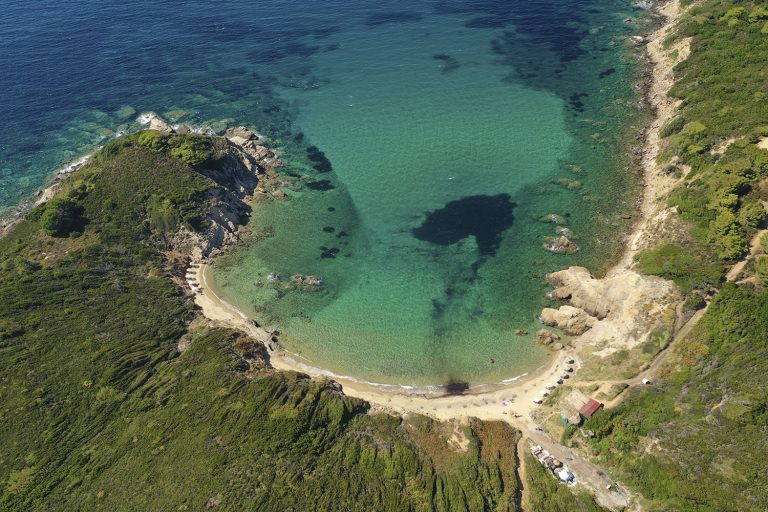
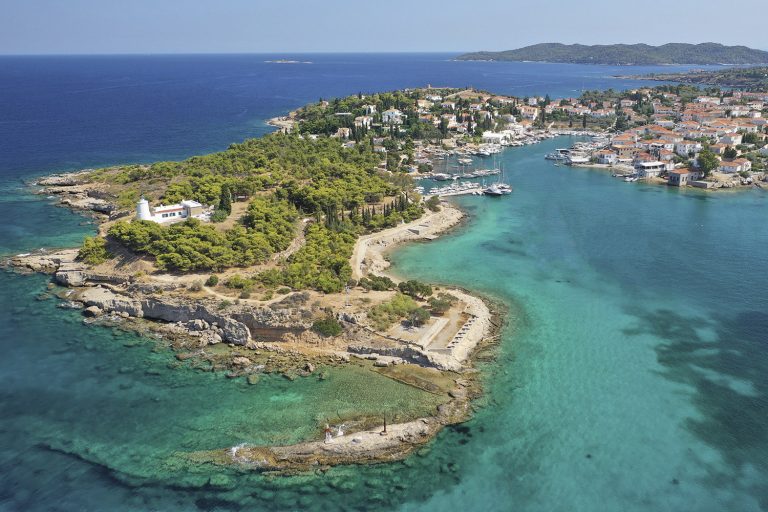
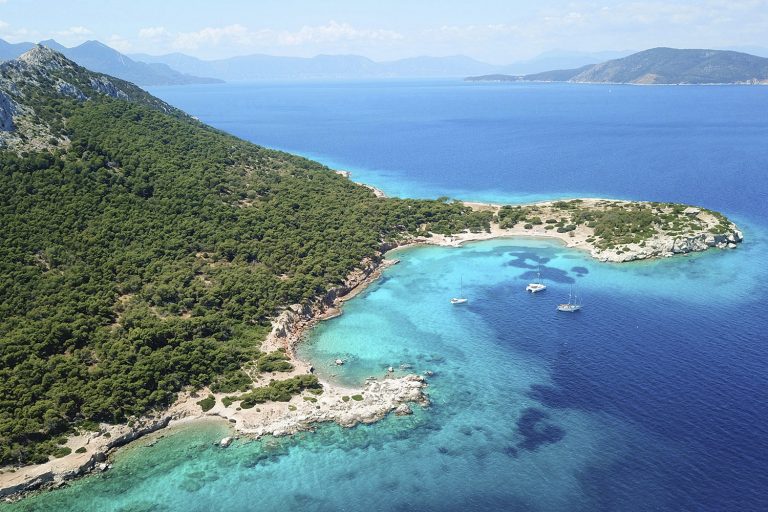
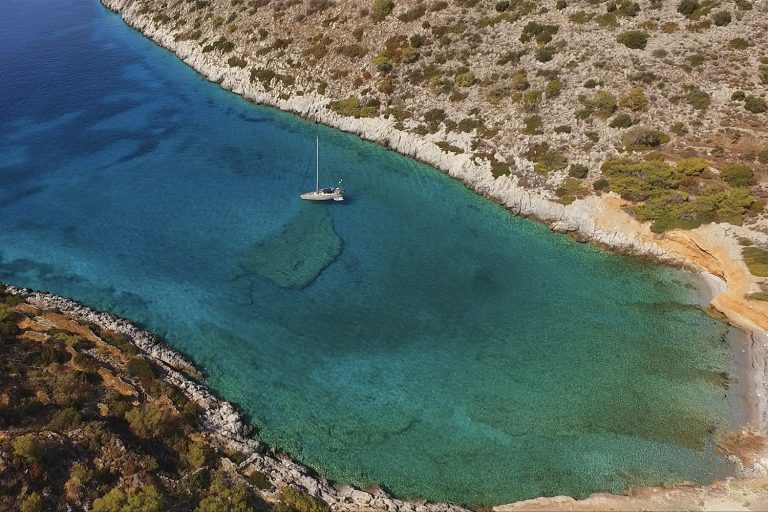
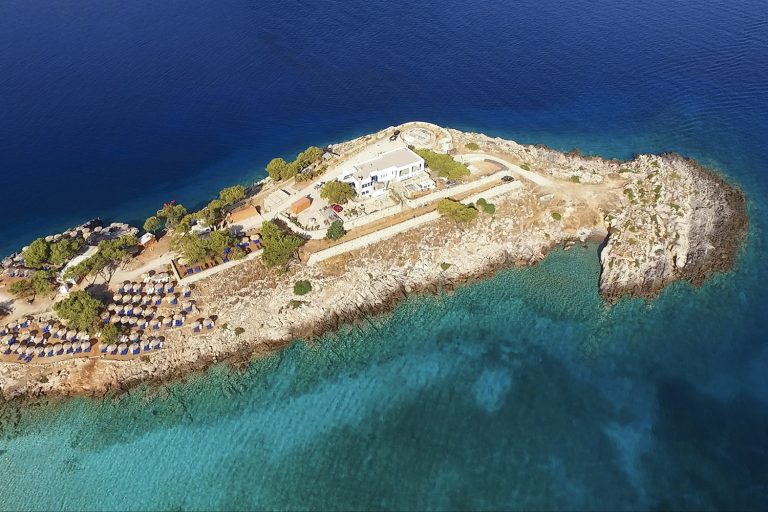
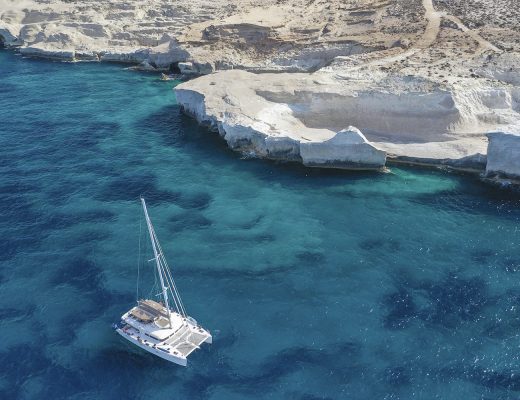
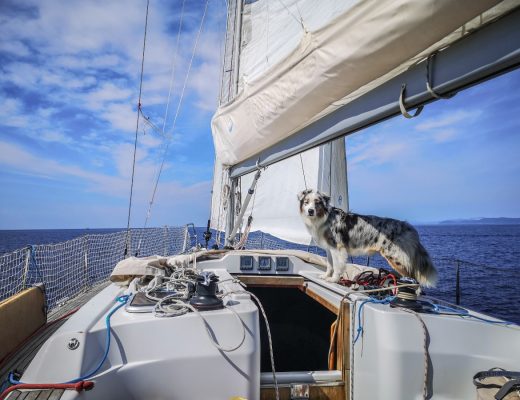
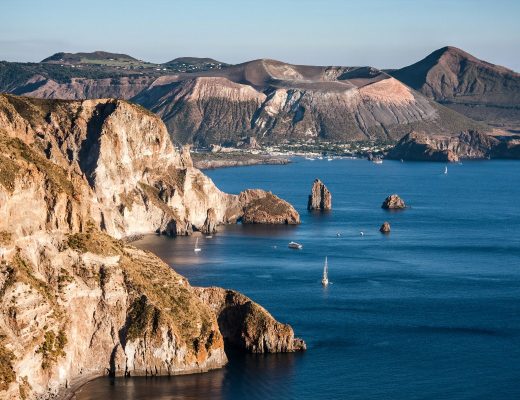
No Comments